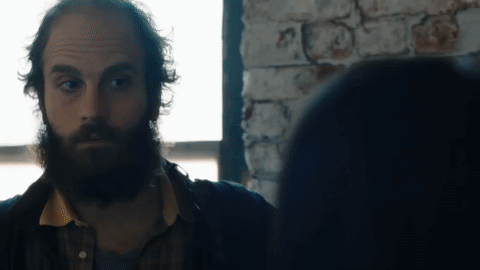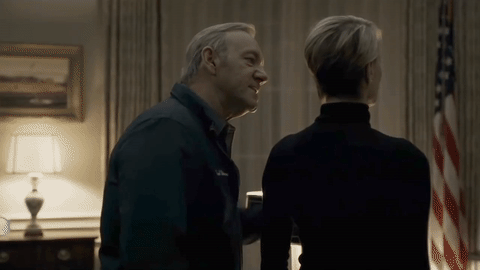


Neil Landau's big-picture take
on TV in the time of plenty
A “free for all”: that’s how UCLA's Neil Landau describes the now-relentless development cycle for creatives and executives as they try to make sense of the TV business – or rather, make sense of what it’s becoming.
Indeed, that description applies equally well to just about every corner of the industry. It can feel even more overwhelming to be a viewer in our age of peak TV. Given the rate and extent of change, any effort to get a big-picture sense of things feels as futile as it is necessary.

Every week brings more shake-ups and portents. Tech-biz watchers have been especially interested in the growing convergence of old-school broadcast and new-school streaming models. Both are adapting and morphing as more and more viewers cut their cords and abandon the paradigm of cable- and pay-TV. In 2015, an estimated five million U.S. viewers stopped paying for TV services. The percentage of viewers who’ve never paid is growing, too.
Given that the idea of an “appointment TV” is now a hopeless anachronism, the viewer of the digital era expects to get the content they want exactly when they want it, just as they’ve been conditioned to expect from every other interaction they have with the Net. Yet the audience for conventional programming – especially live sports and news – remains massive, so the old model is hardly dead yet. Launched in April in the U.S., YouTube TV aims to tempt cord-averse millennials with a skinny bundle of live-streaming channels that includes CBS, Fox and ESPN. Sony PlayStation already has its own Internet TV service and Hulu’s foray is imminent. Meanwhile, Netflix has increased its ubiquity by aligning itself with U.S. cable giant Comcast, thereby reaching cable subscribers who may feel like a strange and increasingly ancient tribe.
Landau’s recent collection of interviews with the showrunners and visionaries driving much of that change, TV Outside the Box may be the best primer on life in peak TV. When he first started writing it several years ago, his original focus was the new “platinum age” for high-quality American TV series like Breaking Bad and House of Cards. But then he realized that what was afoot wasn’t just about the spike in quality content, but “a full-on revolution.” Its ramifications and repercussions stretched beyond matters of art, business and technology to the ways we create and consume this content, too.
Indeed, Landau discovered not only a new landscape but also a new vocabulary, one dominated by suddenly ubiquitous acronyms like OTT (“over-the-top,” or content broadcast over the Internet), SVOD (subscription-supported video on demand; e.g., Netflix, Amazon Prime), AVOD (ad-supported VOD; e.g., YouTube, Facebook, Vimeo) and a gajillion more variations. Even “expressions like ‘new media’ already feel old,” he admits.
Along with the new acronyms have come often-bewildering conditions for those used to the familiar rites and rituals of pilot seasons and overnight numbers. “Development happens all year round," adds Landau, so now "you can make content yourself, you can distribute it yourself, there are no time slots really any more, and overnight ratings are irrelevant – everything is completely upside down.”
Through his efforts to gain a wider understanding, he landed on some key takeaways. One is that much of what’s happening is the result of a fundamental change in how shows are financed. “Television for many decades was always deficit-financed,” Landau notes, “meaning the studios always lost money in the first three, four or five seasons of a show.” To recoup all the money they lost in the early seasons, networks and studios always had to wait – provided the show didn’t fail much earlier, as most did – to reach the magic number of 80 to 100 episodes for a syndication buy. Now, with players like Netflix, Hulu and Amazon all willing to pony up for short-run series, “the new magic number [of episodes] is eight.”
Neil Landau

As for the people making those shows (especially the shows that resonate – more on that later), Landau believes that the true trailblazers will be shouldering more of the risk and initial expense with the hopes of a big score. He cites High Maintenance’s recent shift from Vimeo to HBO as one example. “The creators took all the risk and self-financed it,” he says. “Because they had proof of concept and had huge numbers of traffic, HBO swooped down and bought it. I think we’ll see more of that.”
He also expects more of the big media players to make the transition to OTT, much as HBO has done with HBO Go and HBO on Demand. CBS followed suit when it launched The Good Fight exclusively on its All Access SVOD service in February.
All of this evidence points to a continuing boom both in content and in the number of places to find it, but as Landau warns, “The biggest challenge now is not just making a great show – it’s having people know it exists.”
Up Next:
Amazon's Joe Lewis, Head, Half Hour & Drama Series Development, talks about how it is a boom time for creatives with strong new ideas and an appetite for risk-taking.
PART 1/5
Of course, there is no guarantee that any of these gambits will meet market expectations, or even survive for long. Here in Canada, viewers are saying hello to Amazon Prime and specialty streaming services like Sundance Now and Shudder. They’ve already said goodbye to Shomi, Rogers and Shaw’s attempt to establish their own Netflix-style subscription-supported video on demand (SVOD) platform, which met a largely unmourned demise last November.
In the time it took you to read the last paragraph, approximately 137 new series debuted. It wasn’t so long ago – say, sometime between Six Feet Under’s second season and Homeland’s first – when it felt possible for a viewer to keep up with the few must-see TV shows you needed to know to get through any water-cooler situation in your virtual or actual life. Now the deluge of original content is too unwieldy for any single person to handle, even with help from those tech-savvy friends who use programs like Plex to essentially create and share their own channels of curated content and thereby save one from programming DVRs. And you thought you were so cool for being early on Stranger Things… and then The OA… and then Santa Clarita Diet… and then Big Little Lies. But that was, like, a thousand years ago.
The impact of this change is clear across the board. And with the new abundance comes worries about the glut. First coined by FX head John Landgraf, the very term “peak TV” suggests current conditions are about as precarious as fossil-fuel supplies. In 2015, there were 409 different scripted shows on U.S. television. Last year, the number rose to 455 according to estimates by Landgraf’s FX Networks Research team. Though Landgraf had previously theorized the bubble would’ve begun to deflate by now, he now believes these conditions will persist into 2019, which is not such great news for viewers who feel thoroughly overwhelmed already. “We’ve lost much of the thread of collective conversation of which shows are good, which shows are great,” he said during an appearance at the Television Critics Association’s press tour last summer in Beverly Hills. “We’re at our unit capacity of what we can really pay attention to.”
This seemingly relentless deluge both reflects and drives viewers’ hunger for the new. “Subscription networks constantly need to produce new product,” Landau notes. “If every time you went on to Netflix you saw the same stuff and you’d already seen the shows, it would suddenly become far less interesting and sexy.” Just as flux is TV’s new reality, Landau believes niche is “the new mainstream,” which is why subscription networks have a vast advantage in the ecosystem that’s emerging. “They can buy and put on as many shows as they want. In linear television, there’s limited real estate.”
At the same time, the sinking value of aging third-party content (like the syndicated shows that were once so valuable) intensifies the volume of new production. Netflix has been increasing its amount of debt – estimated at $3 billion – to spend billions more on new programming. “They have to,” says Landau. “If you are a digital streaming network and you’re not making original content, you’re toast. Because the days of just being able to profit by being a second window are over, you need to create first-window content.”
Even though niche programming now trumps the kind of broad-appeal programming that formed the basis for traditional networks, the big players still must cater to an ever-expanding number of niches. Landau again sees Netflix as a prime indicator of that shift, as more SVODs and AVODs expand beyond their original brands and purviews. “When I interviewed Ted Sarandos [Netflix’s chief content officer], I asked, ‘So what's the Netflix brand? This kind of smart, high-quality, provocative content like House of Cards or Orange Is the New Black?’ He said, ‘No, absolutely not. If that's all we made and only focused on that segment of the audience, we'd be out of business really soon. We need shows for everyone.’”








